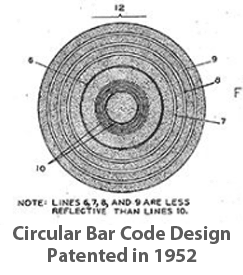Last week, on June 26, the ubiquitous Universal Product Code (UPC), the barcode used for point-of-sale and other applications, reached a birthday of sorts.
That because it was 50 years ago, on June 26, 1974, that the first commercial scan of a UPC at retail occurred at a Marsh Supermarket in Troy, Ohio, when a cashier named Sharon Buchanan scanned a 10-pack of Wrigley's chewing gum.
The choice of chewing gum was intentional: some skeptics had questioned whether small packages could be effectively imprinted and scanned at scale..
Supply Chain Digest Says... |
 |
| Standards organization GS1 says that in 2027, retail point-of-sale systems should have the functionality to read the new 2D GTIN Digital Link barcode (a QR code). |
 |
What do you say? |
| Click here to send us your comments |
 |
| Click here to see reader feedback |
| |
|
|
Hard to imagine now, but prior to this invention cashiers had to manually punch in items and prices at checkout, leading to long lines and many errors. But big changes are coming, as the UPC is to be phased out in favor of a 2D QR code that contains more information and links to still more starting in three years.
We’ve recounted several times the interesting history of how the UPC code came to be invented by the late George Laurer of IBM and will repeat it again here.
Lauer had been given a task by his manager: Write a proposal for grocery executives explaining how IBM would take a previously invented bar code pattern, in the shape of a bull's-eye, and make it work in supermarkets across the US.
But with the manager on vacation, Laurer took a very different tack.
"I didn't do what you asked," he supposedly told the boss upon his return.
The bull's-eye was replaced with what is termed a "linear" bar code, because Laurer had determined that the bull's-eye design wouldn't work.
The circular code (see graphic nearby) had initially been modeled after the Morse code of dots and dashes fame and patented by N. Joseph Woodland and Bernard Silver much earlier, in 1952. The design never really went anywhere, in part because there was no such thing as a laser scanner in the 1950s.
But retailers were looking for a solution to the slow process of keying in information into early POS systems.
A booklet produced in 1966 by Kroger's ended with a despairing wish for a better future: "Just dreaming a little . . . could an optical scanner read the price and total the sale. . . . Faster service, more productive service is needed desperately. We solicit your help."
Kroger's business was groceries, not electronics, so the company went looking for a partner with the necessary expertise.
Kroger turned to RCA, which did indeed develop a solution using the original circular bar code design, and the first real-life test occurred at the Kroger Kenwood Plaza store in Cincinnati. On July 3, 1972, the first automated checkout stands were installed.
(See More Below)
|
CATEGORY SPONSOR: SOFTEON |
|
|
| |
|
|
About the same time, a group of US grocers called for technology vendors to submit designs for a "Universal Product Code, a barcode of some description that would be common to all goods sold in supermarkets and imprinted by the manufacturers and retailers."
 In the end, seven companies, all of them based in the United States, submitted systems to the Symbol Committee. RCA, having demonstrated to the committee its system in Cincinnati, thought it was the clear it would be the winner. In the end, seven companies, all of them based in the United States, submitted systems to the Symbol Committee. RCA, having demonstrated to the committee its system in Cincinnati, thought it was the clear it would be the winner.
However, at the last minute, IBM made a surprise bid – based on Lauer's design.
Lauer thought the existing circular barcode design was too small, and was also worried it would smear when processed by the poor-quality printing presses used for most food labels at the time.
"My nature and my training would not allow me to support something I didn't believe in," Laurer said in a 2010 interview, according to the NPR web site. "I simply went against my manager's instruction and set out to design a better system."
In Raleigh, Laurer and a team of IBM engineers refined and tested the design. And interestingly, Woodland also joined in the effort.
When it came time to present to the team of grocery executives, Laurer said his boss "made it clear that if I was wrong or I could not sell the idea to the brass, it would end my career, not his. My arguments must have been persuasive."
In 1973, the grocery industry settled on the bar code design developed by Laurer and IBM. Though like most innovations it started slow, between 1976 and 1980, the number of stores using IBM's bar code jumped from 104 to 2,207.
But as noted above, change is coming. Standards organization GS1 says that in 2027, retail point-of-sale systems should have the functionality to read the new 2D GTIN Digital Link barcode (a QR code).
There will be an interim period that both an existing UPC and GTIN Digital Link 2D barcode will accepted.
Any reaction to the UPC's birthday? Let us know your thoughts at the Feedback button below.
Your Comments/Feedback
|